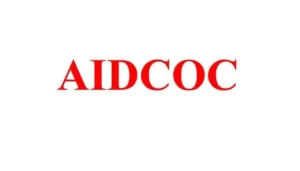- Key Notes on Revised Schedule M: API Part-3 - April 7, 2025
- Key Notes on Revised Schedule M: API Part-2 - March 28, 2025
- Key Notes on Revised Schedule M: API Part-1 - March 15, 2025
Last Updated on March 13, 2024 by The Health Master
1. Waste Management
Laboratories play a crucial role in scientific advancements, but the waste management in laboratory is equally important to ensure a sustainable and safe environment.
In this article, we will explore the intricacies of laboratory waste management, the various types of waste generated, and effective disposal methods.
Laboratory waste management is a critical aspect of scientific research and development.
It involves the proper handling, collection, treatment, and disposal of waste generated in laboratories, ranging from research institutions to industrial settings.
2. Importance of Proper Laboratory Waste Management
Environmental Impact
Improper disposal of laboratory waste can have severe consequences on the environment.
Chemicals and other hazardous materials, if not managed correctly, can contaminate soil and water, leading to long-term ecological damage.
Compliance with Regulations
Adhering to waste management regulations is not just a legal requirement; it also ensures that laboratories maintain a high standard of safety.
Compliance helps prevent accidents, protect personnel, and maintain a positive reputation.
3. Types of Laboratory Waste
Laboratory waste can be broadly categorized into solid waste, liquid waste, and hazardous waste.
Each type requires specific handling and disposal methods to minimize environmental impact.
Solid Waste
Solid waste includes items such as glassware, plastics, and paper.
Proper segregation is crucial to ensure recyclable materials are separated from non-recyclable ones.
Liquid Waste
Liquid waste often consists of chemical residues and solvents.
It requires careful handling to prevent spills and contamination.
Proper disposal methods include neutralization and, in some cases, recycling.
Hazardous Waste
Hazardous waste encompasses materials that pose a threat to human health or the environment.
Examples include certain chemicals, radioactive materials, and biological waste.
4. Proper Segregation and Collection
Importance of Segregation
Segregating waste at its source is fundamental to effective waste management.
Laboratories should have designated bins for different types of waste, making it easier to handle and dispose of them appropriately.
Guidelines for Collection
Following guidelines for waste collection ensures that laboratory personnel handle waste safely.
Providing clear instructions on what goes into each bin helps prevent accidental mixing of incompatible materials.
5. Storage and Labeling
Secure Storage Practices
Proper storage is crucial to prevent spills, leaks, and accidents.
Laboratories must have secure storage areas with adequate ventilation and safety measures in place.
Clear Labeling Methods
All waste containers should be clearly labeled with the type of waste they contain.
This not only facilitates proper disposal but also enhances safety by preventing accidental exposure.
6. Transportation of Laboratory Waste
Safe Handling During Transportation
Transporting laboratory waste requires adherence to safety protocols.
Containers should be tightly sealed, and transport vehicles must comply with regulations to prevent spills or accidents.
Legal Requirements
Compliance with local, state, and federal regulations is essential when transporting laboratory waste.
Proper documentation and adherence to transportation guidelines help avoid legal repercussions.
7. Treatment and Disposal Options
Incineration
Incineration is a common method for treating certain types of laboratory waste, particularly hazardous materials.
It involves burning waste at high temperatures to reduce its volume and eliminate contaminants.
Chemical Treatment
Some liquid wastes undergo chemical treatment to neutralize hazardous components.
This process renders the waste less harmful and facilitates safer disposal.
Recycling
Recycling is an environmentally friendly option for certain types of laboratory waste, such as glass and plastics.
Implementing recycling programs reduces the overall environmental impact of laboratory activities.
8. Best Practices for Laboratory Waste Management
Training and Awareness
Proper training and awareness programs for laboratory personnel are essential.
Educating individuals about the importance of waste management and providing guidelines for its implementation contribute to a safer work environment.
Periodic Audits and Inspections
Regular audits and inspections help identify areas for improvement in waste management practices.
This proactive approach ensures that laboratories stay compliant and continuously enhance their waste management strategies.
9. Challenges in Laboratory Waste Management
Lack of Awareness
One of the significant challenges in laboratory waste management is the lack of awareness among personnel.
Addressing this issue requires ongoing education and training programs.
Insufficient Resources
Some laboratories face resource constraints, making it challenging to implement comprehensive waste management practices.
Finding cost-effective solutions and seeking external support can help overcome this challenge.
10. Future Trends in Laboratory Waste Management
Technological Advancements
Advancements in technology, such as smart waste monitoring systems, are emerging to streamline waste management processes.
These technologies enhance efficiency and provide real-time data for better decision-making.
Sustainable Practices
The future of laboratory waste management involves a shift toward more sustainable practices.
From eco-friendly packaging to the development of biodegradable materials, laboratories are exploring ways to reduce their environmental footprint.
FAQs
Q1: What are the common types of laboratory waste?
A1: Laboratory waste can be categorized into solid waste, liquid waste, and hazardous waste.
Q2: Why is proper segregation important in laboratory waste management?
A2: Proper segregation ensures that different types of waste are handled and disposed of appropriately, preventing environmental contamination.
Q3: How can laboratories contribute to sustainable waste management?
A3: Laboratories can contribute to sustainable waste management by adopting eco-friendly practices, such as recycling and reducing the use of hazardous materials.
Q4: Are there legal requirements for transporting laboratory waste?
A4: Yes, laboratories must comply with local, state, and federal regulations when transporting waste, including proper documentation and adherence to transportation guidelines.
Q5: What are the future trends in laboratory waste management?
A5: Future trends include technological advancements, such as smart waste monitoring systems, and a shift towards more sustainable practices to reduce environmental impact.
Laboratory Waste Management, Types and Its Disposal
NABL certification procedure for Laboratories
Quality Assurance Vs Quality Control in the Pharma Industry
NABL certification for Laboratories: Let’s understand
Major FDA audit findings about Equipment and Instruments
Equipment and Instruments: Maintenance, difference and importance in the Pharma Industry
Upcoming events: Pharma, Cosmetics, Homoeopathy & Medical Devices
Cosmetics Testing in India: A Comprehensive Guide
Difference between Validation and Calibration in the Pharma Industry
Calibration of Laboratory Instruments
Difference: Disintegration and Dissolution test in pharma industry
Understanding DQ, IQ, PQ, and OQ in the Pharma Industry
Duties and responsibilities of QA person in Pharma Industry
Dissolution test: Importance in Pharma Industry
NSQ Drug: Route cause analysis and CAPA
For informative videos by The Health Master, click on the below YouTube icon:
For informative videos on Medical Store / Pharmacy, click on the below YouTube icon:
For informative videos on the news regarding Pharma / Medical Devices / Cosmetics / Homoeopathy etc., click on the below YouTube icon:
For informative videos on consumer awareness, click on the below YouTube icon:












